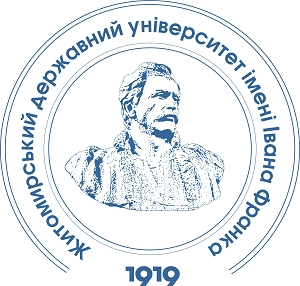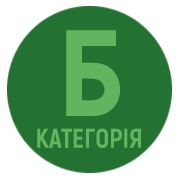THE IMPACT OF TECHNOGENIC POLLUTION ON SOILS OF SANITARY PROTECTION ZONES OF INDUSTRIAL ENTERPRISES IN ZHYTOMYR
DOI:
https://doi.org/10.32782/naturaljournal.12.2025.30Keywords:
heavy metals, radiation background, sanitary protection zone, technogenic impact, environmental monitoring, industrial pollution, geobotanical analysisAbstract
The relevance of the study is due to the need to assess the impact of technogenic pollution on soils of sanitary protection zones (SPP) of industrial enterprises, which is important for ensuring the ecological safety of urbanized areas. This issue is especially relevant for areas where the SPPs of several industrial facilities overlap, which can exacerbate negative environmental consequences.The purpose of the study is to determine the physicochemical properties of soils, the content of heavy metals (Pb, Cd, Cu, Zn, Co, Ni) and the level of background radiation within the SPP of a polymer fiber production enterprise in the city of Zhytomyr.The research methods included soil sampling within the sanitary protection zone, laboratory determination of soil acidity (active, exchangeable, hydrolytic), analysis of heavy metal concentrations by atomic absorption spectrophotometry, and measurement of background radiation (γ- and β-radiation).A geobotanical analysis of vegetation cover was carried out using the Turboveg software to assess the degree of synanthropization and transformation of plant communities under the influence of technogenic load.The results showed that the acidity of the soils is within the neutral and weakly alkaline environment.Exceedance of the maximum permissible concentrations of heavy metals (Pb, Cd, Cu, Co) was detected, which indicates a significant technogenic load. The radiation background does not exceed the norm.Geobotanical analysis revealed a significant spread of synanthropic and invasive plant species, in particular Solidago canadensis L.The scientific novelty of the work lies in establishing the spatial features of the distribution of heavy metals and their dependence on soil acidity in the overlap zone of the enterprises’ SPZ.The practical significance of the study lies in using the obtained results for environmental monitoring of industrial areas, assessing the level of pollution and developing recommendations for managing technogenic load on urban ecosystems.
References
Гудков І.М., Кашпаров В.О., Паренюк О.Ю. Радіоекологічний моніторинг : навчальний посібник. Київ, 2019. 188 с.
Іващенко Т.Г., Пушкарьова І.Д. Визначення забруднюючих речовин ґрунту територій промислових підприємств та ідентифікація їх екологічної небезпеки. Вісник Полтавської державної аграрної академії. 2014. № 4. С. 102–105.
Кроїк Г.А. Токсикологічні аспекти накопичення та розподілу важких металів у ґрунтах промислових агломерацій. Біорізноманіття та роль тварин в екосистемах : матеріали VI Міжнародної наукової конференції. Дніпропетровськ : Вид-во ДНУ, 2011. С. 15–18.
Національний каталог біотопів України / за ред. А.А. Куземко та ін. Київ : ФОП Ю.Я. Клименко, 2018. 442 с.
Про затвердження нормативів гранично допустимих концентрацій небезпечних речовин у ґрунтах, а також переліку таких речовин : постанова Кабінету Міністрів України від 15 грудня 2021 р. № 1325. Офіційний вісник України. 2021. № 101 [Електронний ресурс]. URL: https://zakon.rada.gov.ua/go/1325-2021-п (дата звернення: 03.03.2025).
Соловйова А., Хом’як І.В. Поведінкові стратегії інвазійних видів рослин. Сталий розвиток країни в рамках європейської інтеграції : Усеукраїнська науково-практична конференція здобувачів вищої освіти і молодих учених. Житомир : ЖДТУ, 2021. С. 44.
Тарарай А.М., Хом’як І.В. Інвазійна флора фітоценозів класу Artemisietea vulgaris Lonm.
Rrsa et R. TX. 1950 міста Житомир. Сталий розвиток країни в рамках європейської інтеграції : Усеукраїнська науково-практична конференція здобувачів вищої освіти і молодих учених. Житомир, 2019. С. 29.
Хом’як І.В., Бурлака В.А. Характеристики екосистем Словечансько-Овруцького кряжу, як об’єктів і кормової бази бджільництва. Вісник Державного агроекологічного університету. 2005. № 2. С. 23–252.
Хом’як І.В. Вплив інвазій видів-трансформерів на динаміку рослинності перелогів
Українського Полісся. Біоресурси і природокористування. 2018. Т. 10. № 1–2. С. 29–35.
Хом’як І.В. Синтаксономія відновлюваної рослинності кар’єрів Центрального Полісся.
Український ботанічний журнал. 2022. № 79 (3). С. 142–153. https://doi.org/10.15407/ukrbotj79.03.142.
Хом’як І.В., Хом’як О.І. Потенціал спонтанного тераформінгу ландшафтів суходолу з позицій сучасної теорії динаміки екосистем. Український журнал природничих наук. 2024. № 8. С. 289–299. https://doi.org10.32782/naturaljournal.8.2024.30.
European Environment Agency. Soil pollution and health 2021. [Електронний ресурс]. URL: https://www.eea.europa.eu/publications/zero-pollution/health/soil-pollution (дата звернення: 26.01.2025).
Food and Agriculture Organization of the United Nations. The chemical nature and properties of soil contaminants health. 2021 [Електронний ресурс]. URL: https://openknowledge.fao.org/server/api/core/bitstreams/fe5df8d6-6b19-4def-bdc6-62886d824574/content/src/html/ chapter-02-2.html (дата звернення: 26.01.2025).
Hennekens S.M. Turboveg for Windows: A database management system for vegetation data.
User’s guide. Wageningen : Alterra, 2009.
Mohiuddin K.M., Liu Z., Yang W., Zheng H., Wang F. Soil pollution indices and health risk assessment of metal(loid)s in industrial areas. Scientific Reports, Nature. 2024. https://doi.org 10.1038/s41598-024-59450-4.






